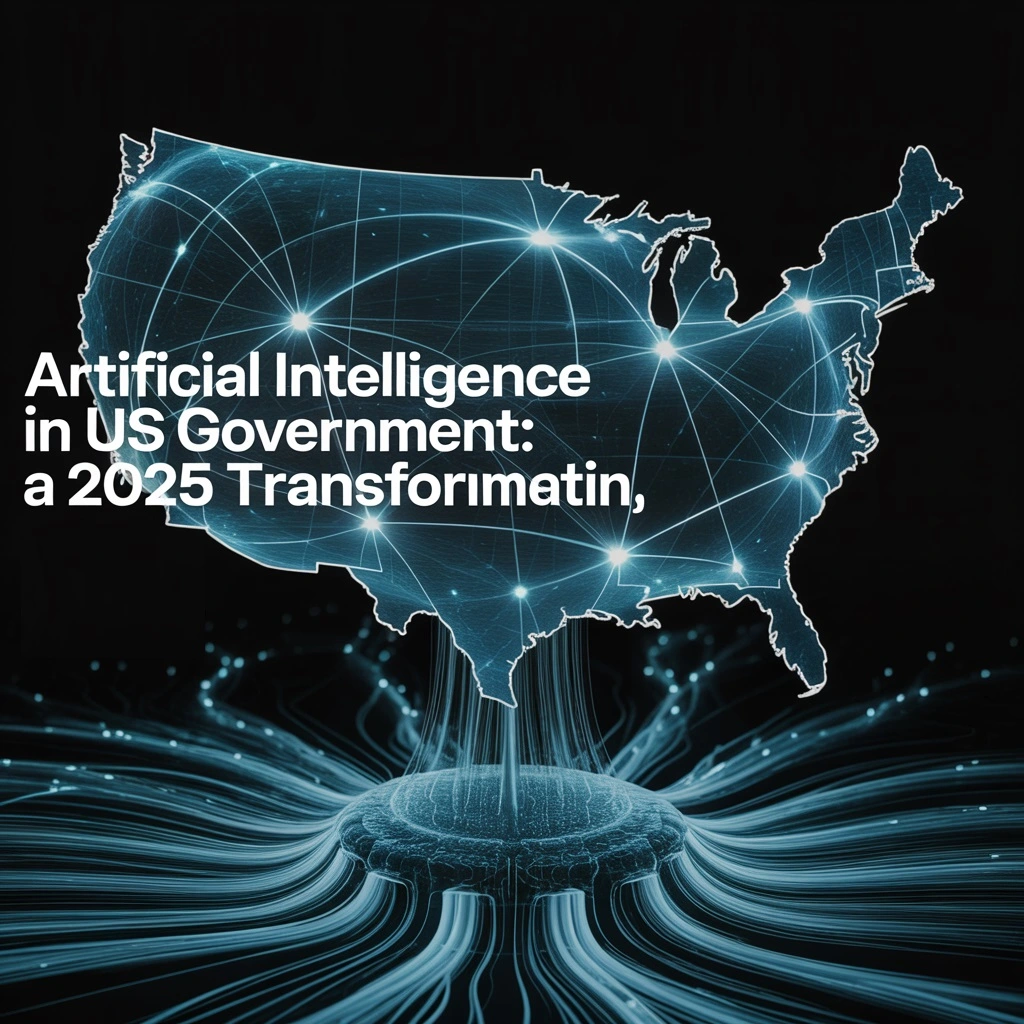By Gudstory Org AI News (May 21, 2025)
Artificial Intelligence (AI) is no longer a futuristic idea—it’s a powerful tool that’s actively reshaping how government institutions function. In the United States, the integration of AI across federal and state agencies is progressing rapidly, influencing everything from public service delivery to national defense strategies.
This article takes a closer look at the role of AI in modernizing the U.S. government in 2025, highlighting its applications, advantages, ongoing challenges, and the future path of AI-powered governance.
Major Use Cases of AI in U.S. Government Operations
1. Enhanced Public Service Delivery
AI-driven technologies are helping agencies respond more efficiently to citizen needs. Virtual agents and automated chatbots are now common on government websites, providing instant support for inquiries, application tracking, and service access around the clock.
2. Smarter Decision-Making with Data
With massive datasets at their disposal, government departments are turning to AI for data analysis. These intelligent systems offer real-time insights that support strategic planning, improve policy development, and optimize resource allocation during emergencies.
3. Tackling Fraud and Managing Risk
Agencies like the IRS are utilizing machine learning tools to identify suspicious financial activities, fraudulent claims, and compliance issues. These technologies are saving billions and reinforcing public confidence in government accountability.
4. Intelligent Infrastructure Oversight
AI is being applied to manage and maintain public infrastructure efficiently. Cities such as San Francisco and Boston are using AI to monitor traffic patterns, reduce congestion, and anticipate infrastructure maintenance needs.
5. Strengthened Cybersecurity
As cyberattacks become more advanced, AI is playing a key role in defending government networks. AI systems can detect anomalies, forecast threats, and trigger automated security responses to protect sensitive information.
Federal AI Programs and Policies
The U.S. government is actively fostering responsible AI deployment through various strategic efforts:
-
National AI Initiative Act of 2020: Establishes a coordinated framework for AI research and innovation across government entities.
-
AI.gov: Acts as the digital hub for all federal AI efforts, projects, and regulatory updates.
-
AI Bill of Rights Blueprint (2022): Offers guidance to ensure AI applications align with human rights and ethical standards in public services.
Advantages of AI Integration in Government
-
Increased Efficiency: Reduces manual workloads and streamlines bureaucratic processes.
-
Greater Accuracy: Minimizes mistakes in data management and analysis.
-
Improved Transparency: Offers real-time dashboards for monitoring operations and performance.
-
Expanded Access: Ensures wider service availability for all communities.
Key Challenges of Government AI Adoption
While the benefits are significant, certain hurdles remain:
-
Privacy Concerns: Safeguarding personal data demands strict security and compliance standards.
-
Algorithmic Bias: Inadequately trained AI models risk reinforcing societal inequalities.
-
Workforce Impact: Automation may lead to job disruptions without effective reskilling programs.
-
Resource Limitations: Smaller agencies may face budgetary barriers in deploying advanced AI systems.
Looking Ahead: The Future of AI in U.S. Governance
AI is poised to play an even greater role in shaping responsive, forward-thinking governance in areas such as:
-
Predictive Public Services: Anticipating community needs and proactively delivering solutions.
-
Digital Identity Systems: Facilitating secure and seamless access to government services.
-
Environmental Stewardship: Using AI to track climate data and support sustainable resource use.
To navigate this future responsibly, the government is investing in digital education, ethical frameworks, and partnerships with the private sector to promote equitable and sustainable AI development.
Conclusion
AI is emerging as a transformative force in American governance. By embracing this technology, the U.S. government can build a more efficient, transparent, and responsive public sector. As innovation continues, it will be vital for leaders to ensure that technological advancement goes hand-in-hand with accountability, equity, and public trust—creating a smarter and more inclusive government for all.


